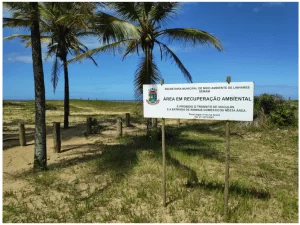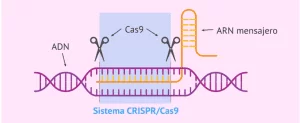ORIGINAL ARTICLE
TORREÃO, André D Albuquerque [1], DENDASCK, Carla Viana [2]
TORREÃO, André D Albuquerque. DENDASCK, Carla Viana. The quantification of moral damage and the impossibility of the generic request. Revista Científica Multidisciplinar Núcleo do Conhecimento. Year. 06, Ed. 11, Vol. 09, p. 42-51. November 2021. ISSN: 2448-0959, Access Link: https://www.nucleodoconhecimento.com.br/law/generic-request, DOI: 10.32749/nucleodoconhecimento.com.br/law/generic-request
ABSTRACT
One of the contemporary challenges of the judiciary is directly linked to the search for the breaking of slowness, ensuring fluidity on the part of the judiciary and access to justice of society as a whole. One of the alternatives is based on the need for professionals to file actions that have consolidated subsidies for their existence, thus reducing the burden of the judiciary. The processes for moral damages also represent an important percentage, leading even some authors to point out the existence of a “trivialization” of this type of process. Within this context, this article presents the following guide question: How to quantify moral damage and what are the consequences of entering with a generic application? Thus, the objectives outlined here sought to understand how moral damage occurs, going through its historical context, the right of reparation for damage, and finally, the need to look at the creation of a solid process by entering an action in order to avoid the trivialization of this type of process.
Keywords: Moral Damage, Generic Order, Reparation.
INTRODUCTION
One of the actions that most end up overloading the judiciary is related to moral damage. This is because we have a lot of people who end up misused this subjective right. The problem worsened, because at some point in our history moral damage was granted in cases where there was no occurrence, creating what popularly called the “moral damage industry”, thus creating a chain of trivialization of processes (LIMA, 2017).
Moral damage is the right injury of personality and is characterized as the offense or violation of a person’s moral property, such as that they refer to his freedom, his honor, his health (mental or physical), his image. Happy the definition made by Professor Cavalieri (2012) when defining what is moral damage, and the importance of its Autonomous existence:
Por mais pobre e humilde que seja uma pessoa, ainda que completamente destituída de formação cultural e bens materiais, por mais deplorável que seja seu estado biopsicológico, ainda que destituída de consciência, enquanto ser humano será detentora de um conjunto de bens integrantes de sua personalidade, mais precioso que o patrimônio. É a dignidade humana, que não é privilégio apenas dos ricos, cultos ou poderosos, que deve ser por todos respeitada. Os bens que integram a personalidade constituem valores distintos dos bens patrimoniais, cuja agressão resulta no que se convencionou chamar de dano moral. Essa constatação, por si só, evidencia que o dano moral não se confunde com o dano material; tem existência própria e autônoma, de modo a exigir tutela jurídica independente (CAVALIERI, 2012, p. 89).
It happens that not everything can be classified as moral damage, it is not any mere annoyance that should cause its occurrence, the damage must cause a real shake in the moralpoint of the life of that victim will never be the same. In this tuning path, we can point out what Sérgio Cavalieri (2012, p. 93):
[…] só deve ser reputado como dano moral a dor, vexame, sofrimento ou humilhação que, fugindo à normalidade, interfira intensamente no comportamento psicológico do indivíduo, causando-lhe aflições, angústia e desequilíbrio em seu bem-estar. Mero dissabor, aborrecimento, mágoa, irritação ou sensibilidade exacerbada estão fora da órbita do dano moral, porquanto, além de fazerem parte da normalidade do nosso dia a dia, no trabalho, no trânsito, entre os amigos e até no ambiente familiar, tais situações não são intensas e duradouras, a ponto de romper o equilíbrio psicológico do indivíduo. Se assim não se entender, acabaremos por banalizar o dano moral, ensejando ações judiciais em busca de indenizações pelos mais triviais aborrecimentos.
In view of this scenario, one must be zealous in deliberating on the occurrence of moral damage, because in our daily lives we face several unpleasant situations that life in society imposes on us and that are not considered moral damage, but situations that are part of our daily lives and we have to learn to live with them.
OF HISTORICAL EVOLUTION
A very important aspect to understanding moral damage is its historical evolution. The recognition of the legal autonomy of moral damage did not happen promptly, being acquired through an evolutionary cycle. This process can be summarized in three distinct phases.
The first phase deals with the irreparability of moral damage that De Lima (1940) has already alluded to as an “extravagance of the human spirit”, and which, in the study published in the Bulletin of the Faculdade de Direito de Coimbra, points out some arguments that were used, in this first phase, as the “immorality of compensating pain with money”. At this stage, the paradigm (reparability) of moral damage was not adopted. However, this concept was losing strength with the very evolution of law.
During the twentieth century, the thesis of the repair of moral damage begins to create more body. However, moral damage was usually observed only when tied to material damage, that is, there was difficulty in recognizing its autonomy (LIMA, 2017).
With the evolution of the law, we reached the second phase, which does not yet admit an immediate recognition of moral damage, but which begins to be admitted and observed by jurisprudence, however, always linked to the occurrence of a material damage. Thus, if the victim were to bitter material damage, there was the possibility of convincing the judiciary of the occurrence of a moral damage in parallel, that is, this was observed as a result of the existence of that, limiting his autonomy.
By the way, it is worth mentioning that the Civil Code of 1916, which was in force at the time, did not prevent the autonomous reparation of moral damage. With the advent of the constitution of 1988, moral damage has recognized its own autonomy and reparability, according to Article 5, V and X, thus reaching the third phase.
Art. 5º Todos são iguais perante a lei, sem distinção de qualquer natureza, garantindo-se aos brasileiros e aos estrangeiros residentes no País a inviolabilidade do direito à vida, à liberdade, à igualdade, à segurança e à propriedade, nos termos seguintes:
(…)
V – é assegurado o direito de resposta, proporcional ao agravo, além da indenização por dano material, moral ou à imagem;
(…)
X – são invioláveis a intimidade, a vida privada, a honra e a imagem das pessoas, assegurado o direito a indenização pelo dano material ou moral decorrente de sua violação;
Thus, only with the arrival of the citizen constitution did moral damage actually gain its autonomy (autonomous reparability), being classified as a category of damage.
It should be emphasized that the Civil Code of 2002, when conceptualizing an unlawful act in article 186, expressly alluded to moral damage, decrementing any doubt as to its recognition and discipline by the Brazilian system, else whereo let us see:
Art. 186. Aquele que, por ação ou omissão voluntária, negligência ou imprudência, violar direito e causar dano a outrem, ainda que exclusivamente moral, comete ato ilícito.
THE REPAIR OF MORAL DAMAGE
Even though the discussion phase on the recognition and discipline of moral damage is overcome, the institute still generates much debate in doctrine and jurisprudence with regard to a fair reparation, because unlike the material damage where it can be calculated objectively, in the moral damage its quantification is something much more complex. In practice, we observe that there is a “table” of moral damage, where the process is judged according to the damage caused, no longer observing the minutiae of each specific case. This is intended to establish similar values for similar situations.
This type of action by the judiciary is nothing more than a way to charge moral damage without having, for this, legislation that is in the mold of the usual practice, creating several disparities and injustices in the courts of the whole country.
Thus, seeking to achieve greater justice in the definition of moral damages, some systems were created for their definition in order to avoid such discrepant decisions for similar cases, in an attempt to reduce the subjectivity so inherent to the institute.
QUANTIFICATION OF MORAL DAMAGE
There are two systems for the reparation of moral damages: the three-phase system and the open system, according to Stolze and Pampolha (2013) there is a “predetermination, legal or jurisprudential, of the amount of compensation, applying the judge the rule to each specific case, observing the limit of the value established in each situation.” In the second, the judge has the competence “to fix the quantum subjectively corresponding to the repair/compensation of the injury (p.419)”.
Brazil uses the open system, through arbitrary, in this system, in this system, there are no pre-fixed values for indemnification. It is up to the Magistrate, according to his opinion, to quantify the damage. An important lesson is brought by Stolze and Pampolha (2013, p.419) who consider arbitration as the natural procedure of the settlement of moral damage, in view of what article 475-C, II of the CPC of 1973 had, because according to the renowned authors, the nature of the settlement object requires arbitration:
Ora, o objeto da liquidação da reparação pecuniária do dano moral é uma importância que compensa a lesão extrapatrimonial sofrida. Não há como evitar a ideia de que, efetivamente, a natureza do objeto da liquidação exige o arbitramento, uma vez que os simples cálculos ou os artigos são inviáveis, na espécie.
Analyzing the theme, Cavalieri (2012, p.103) understands that arbitration is the best way to clean up reparation for moral damage:
Não há, realmente, outro meio mais eficiente para se fixar o dano moral a não ser pelo arbitramento judicial. Cabe ao juiz, de acordo com o seu prudente arbítrio, atentando para a repercussão do dano e a possibilidade econômica do ofensor, estimar uma quantia a título de reparação pelo dano moral.
It should be emphasized that, even if Brazil adopts the open system, we often observe that charging is still widely used in our legal system, causing a “plastering” of decisions.
It is quite true that the open system has its flaws, and may cause a certain legal uncertainty, to the extent that we may have a discrepancy between decisions of similar cases, however, it seems to us to be a lesser evil than the application of the charging system, which extremely objectively evaluates moral damage, which by nature itself carries a high degree of subjectivity, becoming with this incompatible.
For the arbitration of pecuniary reparation for moral damages, the Judge must consider the political circumstances, the repercussion of the unlawful, the personal conditions of the parties, as well as the principle of reasonableness and proportionality (LIMA, 2017).
THE CODE OF CIVIL PROCEDURE
The new Code of Civil Procedure presents a significant novelty with regard to the opportunity that the parties involved in the process have to seek a more correct quantification of moral damage in the conciliation and mediation hearing.
The code of civil procedure still presents us with two important tools against the “industry of moral damage”, since it precludes the generic claim in moral damage (art. 292, V), as well as the fixing of the succumbing fees based on the desired value, in the case of dismissal (art. 85, § 6).
Given the impossibility indicated by the normative diploma, it is up to the promoter to present in the vestibular piece the desired value. This time, if the Magistrate grants what has been pleaded, will cease for the petitioner the recursal interest, nevertheless, the Author will be more careful to ask for an amount outside the reality, because in the event of succumbence, the succumbing fees will be taken taking into account the value described in the initial, in addition to the procedural costs.
Among the defenders of the impossibility of the generic application, we can mention the Illustrious Professor Didier Júnior (2015, p. 581), who in his course of Civil Procedural Law, thus positioned himself:
Problema que merece cuidadosa análise é a do pedido genérico nas ações de reparação de dano moral: o autor deve ou não quantificar o valor da indenização na petição inicial? A resposta é positiva: o pedido nestas demandas deve ser certo e determinado, delimitando o autor quanto pretende receber como ressarcimento pelos prejuízos morais que sofreu. Quem, além do próprio autor, poderia quantificar a “dor moral” que alega ter sofrido? Como um sujeito estranho e por isso mesmo alheio a esta “dor” poderia aferir a sua existência, mensurar a sua extensão e quantificá-la em pecúnia? A função do magistrado é julgar se o montante requerido pelo autor é ou não devido; não lhe cabe, sem uma provocação do demandante, dizer quanto deve ser o montante. Ademais, se o autor pedir que o magistrado determine o valor da indenização, não poderá recorrer da decisão que, por absurdo, a fixou em um real (R$ 1,00), pois o pedido teria sido acolhido integralmente, não havendo como se cogitar interesse recursal. O art. 292, V, do CPC, parece ir por este caminho, ao impor como o valor da causa o valor do pedido nas ações indenizatórias, “inclusive as fundadas em dano moral”. Somente é possível a iliquidez do pedido, nestas hipóteses, se o ato causador do dano puder repercutir, ainda, no futuro, gerando outros danos (p. ex.: uma situação em que a lesão à moral é continuada, como a inscrição indevida em arquivos de consumo ou a contínua ofensa à imagem); aplicar-se-ia, então, o inciso II do par. 1º do art. 624, aqui comentado. Fora dessa hipótese, incabível a formulação de pedido ilíquido.
The Superior Court of Justice is responsible for giving the final say regarding the actions involving moral damage, the aforementioned body disclosed 11 (eleven) theses consolidated in court on civil liability for moral damage. These understandings are presented in issue 125 of the Jurisprudence in theses (BRASIL, 2019).
It is notepoint to the precedent that defines that the setting of the amount due as compensation for moral damages should consider the biphasic method, which combines the criteria of the assessment of the circumstances of the case and the legal interest injured and minimizes possible arbitrariness of the adoption of criteria only subjective of the judge, in addition to rule out any charge of the damage (BRASIL, 2019).
FINAL CONSIDERATIONS
The present work sought to present the complexity of the quantification of moral damage, demonstrating its concept, historical evolution and criteria used for its quantification.
In this tuning point, it was demonstrated that there is no doubt about the independence of the institute from moral damage, consolidated by the current Constitution, as well as by the legal commandments set out in the Civil and Civil Procedure Code.
In addition, the research sought to demonstrate the elements used to attribute moral damage, presenting criteria used that aim to reduce the complexity and subjectivity of this institute, as well as the understanding of the Superior Court of Justice that it is the body responsible for giving the last word on the subject.
It was also raised the changes caused by the edition of the new Civil Code in relation to the impossibility of the generic application for moral damages (art. 292, V), as well as the fixing of the succumbing fees based on the desired value, in the case of dismissal (art. 85, § 6).
Thus, it has been demonstrated that there is still no definitive solution to its applicability because it is the institute endowed with great subjectivity, but pointed out the evolution of the criteria of its applicability, which aims to avoid misplaced judicial demands that cram the judiciary and feed the “industry of moral damage”, in addition to trying, through more objective criteria, the occurrence of very different results for similar cases.
REFERENCES
BRASIL. Planalto. Disponível em: <http://www.planalto.gov.br/ccivil_03/constituicao/constituicao.htm>. Acesso em: 21/11/2021.
BRASIL. Planalto. Disponível em: <http://www.planalto.gov.br/ccivil_03/leis/2002/L10406compilada.htm>. Acesso em: 21/11/2021.
BRASIL. Planalto. Disponível em: http://www.planalto.gov.br/ccivil_03/_ato2015-2018/2015/lei/l13105.htm>. Acesso em: 21/11/2021.
BRASIL. STJ. Disponível em: https://scon.stj.jus.br/SCON/jt/toc.jsp>. Acesso em: 21/11/2021.
BRASIL. CONJUR. Disponível em: https://www.conjur.com.br/2019-mai-21/stj-divulga-11-teses-responsabilidade-civil-dano-moral>. Acesso em: 21/11/2021.
CAVALIEIRI FILHO, Sérgio. Programa de Responsabilidade Civil. 10. ed. São Paulo: Atlas, 2012.
DE LIMA, Zulmira Pires. Algumas considerações sobre a responsabilidade civil por danos morais, In Boletim da Faculdade de Direito, Universidade de Coimbra, 2.º suplemento, Coimbra, 1940, v. XV, p. 240.
DE LIMA, Zulmira Pires. JUSBRASIL. Disponível em: <https://tj-mg.jusbrasil.com.br/jurisprudencia/942281622/apelacao-civel-ac-10145130562435001-juiz-de-fora>. Acesso em: 21/11/2021.
DIDIER JÚNIOR, Fredie. Curso de Direito Processual Civil: introdução ao direito processual civil, parte geral e processo de conhecimento.17.ed. Salvador : JusPodivm, 2015.
LIMA, André Barreto. Banalização dos processos referentes a danos morais. Disponível em: < https://jus.com.br/artigos/59041/banalizacao-dos-processos-referentes-a-danos-morais/3 > acesso em novembro de 2021.
STOLZE, Pablo; PAMPOLHA FILHO, Rodolfo. Novo Curso de Direito Civil: Responsabilidade Civil. 10ª ed. São Paulo: Saraiva, 2013.
[1] Graduated in Law from UFaculdade Unipê. Specialization in Constitutional and Administrative Law by Uniamérica.
[2] PhD in Psychology and Clinical Psychoanalysis. Doctorate in progress in Communication and Semiotics at the Pontifícia Universidade Católica de São Paulo (PUC/SP). Master’s Degree in Religious Sciences from Universidade Presbiteriana Mackenzie. Master in Clinical Psychoanalysis. Degree in Biological Sciences. Degree in Theology. He has been working with Scientific Methodology (Research Method) for more than 15 years in the Scientific Production Guidance of Master’s and Doctoral Students. Specialist in Market Research and Health Research. ORCID: 0000-0003-2952-4337.
Submitted: November, 2021.
Approved: November, 2021.


